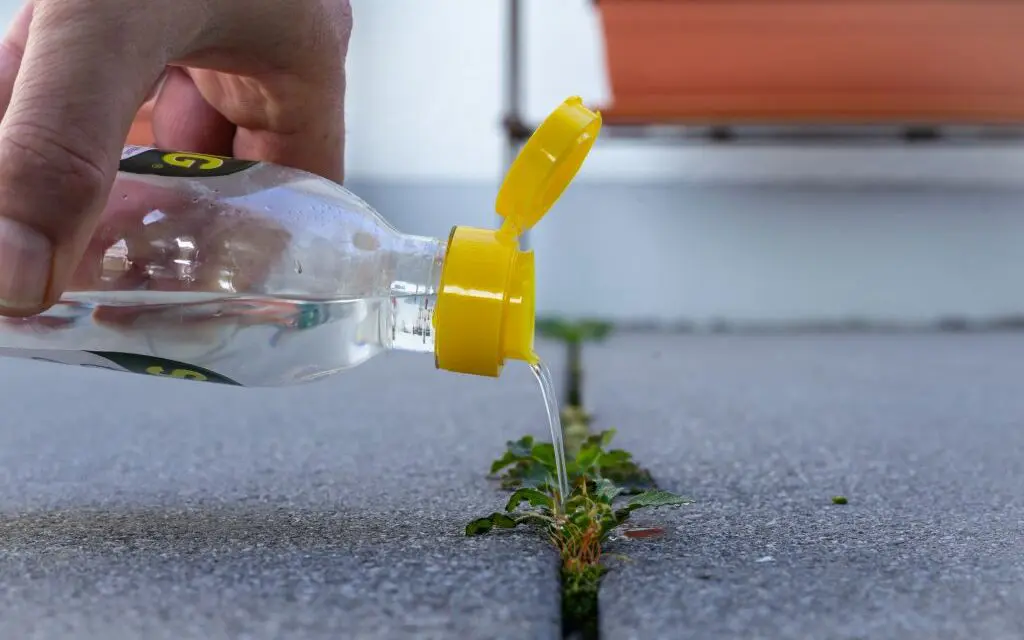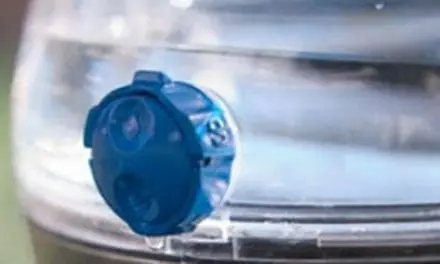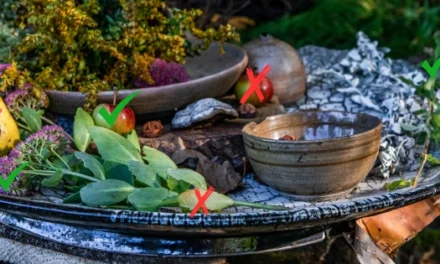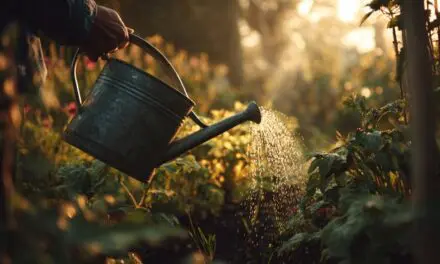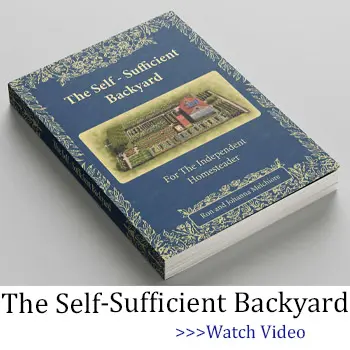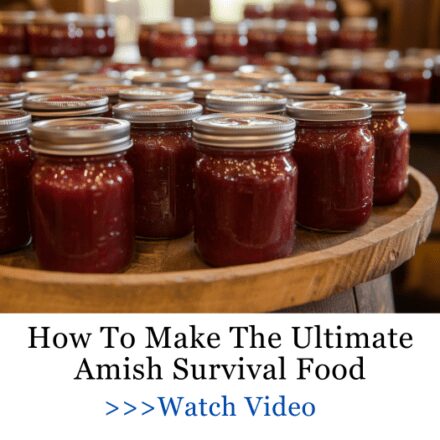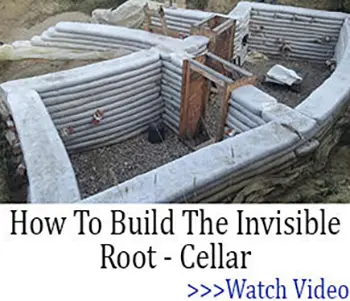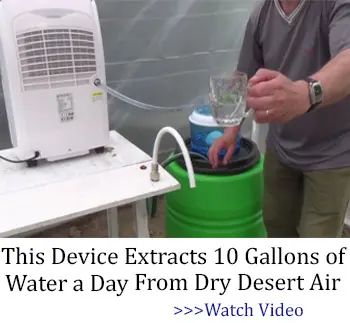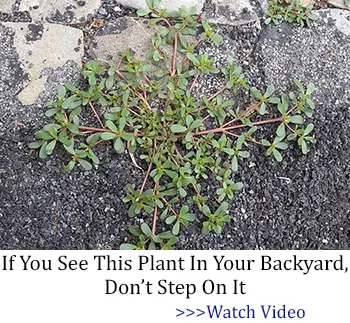In a world increasingly dependent on chemicals, many of us are returning to nature for the solutions our ancestors once relied on. If you’re trying to live a more self-sufficient life, you’ve likely already taken steps to reduce your dependence on modern conveniences so it makes sense to look for a vinegar weed killer recipe. From growing your own food to collecting rainwater, every choice brings you closer to true independence. But what about your garden weeds? If you’re still reaching for store-bought herbicides, you’re missing a golden opportunity to take back control with a time-tested, all-natural alternative: vinegar weed killer, one of the best DIY homemade weed killers.
Used for generations and often overlooked in today’s chemical-hungry society, vinegar-based weed control is one of the simplest and most effective DIY solutions for unwanted plants. Not only is it affordable and non-toxic, but it’s also something you can whip up from ingredients already in your pantry. And for homesteaders, off-gridders, and backyard gardeners alike, it’s one more way to eliminate dependency on the industrial system—and do so with confidence.
Let’s dive into how this old-fashioned remedy works, what it can and can’t do, and how to make the most of it in your self-reliant lifestyle.
Why Vinegar Works as a Weed Killer
The active ingredient in vinegar is acetic acid, and it’s this compound that does the heavy lifting. When sprayed directly on the leaves of a plant, the acid draws out moisture and breaks down cell walls. This causes the plant to dry out and die, typically within hours. For young, tender weeds—especially those growing in cracks, driveways, or pathways—it’s incredibly effective.
Most kitchen vinegar contains around 5% acetic acid, which is strong enough for common household use. However, for tougher weeds or repeated regrowth, you’ll want a stronger concentration—such as 10% or even 20% horticultural vinegar. These higher-strength formulas are still natural but pack more punch for persistent problems.
Vinegar Weed Killer Recipe
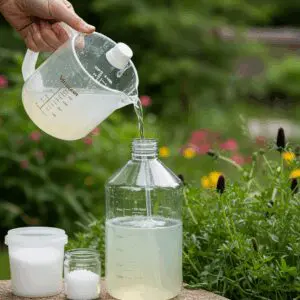 This simple recipe uses common household ingredients. You can mix it in a matter of minutes and apply it immediately. Here’s what you’ll need:
This simple recipe uses common household ingredients. You can mix it in a matter of minutes and apply it immediately. Here’s what you’ll need:
Ingredients:
-
1 gallon of white vinegar (5% acetic acid or higher)
-
1 cup of table salt (or rock salt)
-
1 tablespoon of liquid dish soap (like Dawn or a castile soap)
Instructions:
-
In a large bucket or garden sprayer, combine the vinegar and salt. Stir until the salt is fully dissolved.
-
Add the dish soap last. This acts as a surfactant, helping the mixture stick to the leaves of the weed.
-
Pour the solution into a spray bottle or pump sprayer.
-
Spray directly on the leaves of the weeds during a sunny, dry day for best results.
Pro Tip: Avoid spraying the soil. This mixture is non-selective and can harm any plant it touches, including your vegetables or flowers.
What It Can and Cannot Do
What It Can Do:
-
Kill young weeds quickly, especially those with thin leaves and shallow roots.
-
Dry out and damage plant foliage on contact.
-
Help maintain walkways, driveways, fence lines, and other hardscaped areas without synthetic chemicals.
-
Work as an immediate solution when used properly in warm, dry conditions.
What It Can’t Do:
-
Kill deep-rooted or well-established perennial weeds (like dandelions or thistle) in one treatment.
-
Penetrate the root system to prevent regrowth in the long term.
-
Act as a pre-emergent weed killer—it only works on existing, visible weeds.
-
Replace mulch or cover crops as a permanent weed control method.
This isn’t a miracle cure. It’s a natural, fast-acting solution best used as part of a larger strategy—one that includes good soil health, mulching, hand weeding, and strategic planting. If you’re expecting it to sterilize your soil or prevent future weeds from ever coming back, you’ll be disappointed. But as a safe, sustainable, and effective spot treatment? It earns its place in every self-reliant toolbox.
Important Safety and Environmental Notes
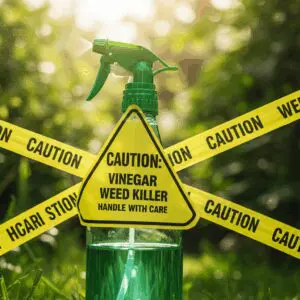 Because vinegar weed killer is non-selective, it can damage any plant it touches. Use it only on weeds you want gone. Also, the salt in the recipe can linger in the soil, especially if applied repeatedly, which can harm nearby plants or alter soil structure over time.
Because vinegar weed killer is non-selective, it can damage any plant it touches. Use it only on weeds you want gone. Also, the salt in the recipe can linger in the soil, especially if applied repeatedly, which can harm nearby plants or alter soil structure over time.
That’s why it’s best to:
-
Use sparingly and only where necessary.
-
Avoid garden beds or areas where you plan to grow food.
-
Apply on sunny days when rain isn’t expected for at least 24 hours.
-
Wear gloves and eye protection when using higher concentrations of vinegar.
Homesteading is about stewardship—of your land, your resources, and your health. This recipe, when used wisely, aligns perfectly with those principles.
How Our Ancestors Dealt With Weeds—And Everything Else
The vinegar weed killer recipe may feel like a “hack” today, but it’s really just a modern rediscovery of what our ancestors already knew. Before chemical fertilizers and synthetic herbicides, people relied on common sense, natural solutions, and practical knowledge to maintain their homesteads. They made do with what they had—and it worked.
This kind of forgotten knowledge is exactly what The Lost Ways is all about. It’s not just a book—it’s a survival manual rooted in the wisdom of the pioneers, Native Americans, and frontier families who knew how to thrive without electricity, grocery stores, or modern medicine. You’ll learn how to preserve food without refrigeration, make your own natural remedies, build smokehouses, trap animals, and yes—even how to care for the land in ways today’s experts have completely overlooked.
Click here to get your copy of The Lost Ways.
If you’re serious about self-reliance, there’s no better investment. This book is like having your great-great-grandfather teaching you how to live, build, hunt, and grow like it’s 1850—and it might just save your life one day.
Putting Natural Solutions Into Action
The vinegar weed killer recipe is a small but powerful step in a larger journey—one that leads away from dependency and toward true independence. Whether you’re just starting your self-sufficiency efforts or you’re a seasoned off-grid veteran, the real key is mindset. Look to the past, learn from it, and apply it today. We don’t need chemical giants, overpriced solutions, or fancy packaging to survive or thrive.
Nature provides the tools—we just have to remember how to use them. Whether it’s clearing weeds from your pathways or feeding your family off the land, the answers have always been there.
And if you want more of those answers—real, battle-tested knowledge that doesn’t rely on electricity, the internet, or fragile supply chains—The Lost Ways is your next step. Grab your copy here and start reclaiming the skills that built this country.
Because one day, the grid might fail. But your knowledge—if you choose to preserve it—never will.
You may also like:
Your OWN DIY Painkiller In A Jar (Video)
Stop Throwing Away Your Weeds, Do This Instead!
Weeds You Should Never Pull From Your Backyard

